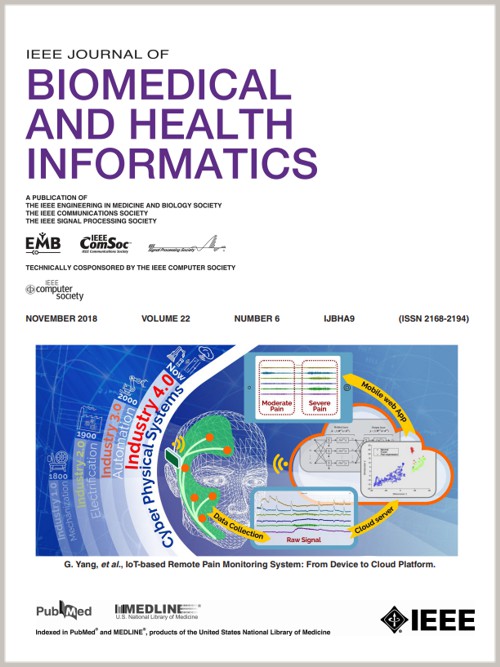CellCircLoc:用于预测和解释细胞系特异性 CircRNA 亚细胞定位的深度神经网络。
IF 6.8
2区 医学
Q1 COMPUTER SCIENCE, INFORMATION SYSTEMS
IEEE Journal of Biomedical and Health Informatics
Pub Date : 2024-11-04
DOI:10.1109/JBHI.2024.3491732
引用次数: 0
摘要
环状 RNA(circRNA)的亚细胞定位对于了解其功能相关性和调控机制至关重要。circRNA的亚细胞定位在不同细胞系中表现出差异,显示了circRNA在不同细胞环境中调控的多样性和复杂性。然而,现有预测 circRNA 亚细胞定位的计算方法往往忽略了细胞系特异性的重要性,而是在所有细胞系的汇总数据上训练一个通用模型。考虑到circRNA在不同细胞系中的多样性和上下文依赖行为,开发细胞系特异性模型以准确预测circRNA亚细胞定位势在必行。在这项研究中,我们提出了一种基于序列的深度学习模型CellCircLoc,用于circRNA亚细胞定位预测,该模型针对不同细胞系进行训练。CellCircLoc 利用卷积神经网络、Transformer 模块和双向长短期记忆的组合来捕捉序列的局部特征和序列内的长程依赖关系。在 Transformer 模块中,CellCircLoc 采用了缜密的卷积机制来捕捉单个核苷酸的重要性。大量实验证明,CellCircLoc 在准确预测不同细胞系的 circRNA 亚细胞定位方面非常有效,优于其他不考虑细胞系特异性的计算模型。此外,CellCircLoc 的可解释性还有助于发现与 circRNA 亚细胞定位相关的重要图案。CellCircLoc 网络服务器的网址是 http://csuligroup.com:8000/cellcircloc。源代码可从 https://github.com/CSUBioGroup/CellCircLoc 获取。本文章由计算机程序翻译,如有差异,请以英文原文为准。
CellCircLoc: Deep Neural Network for Predicting and Explaining Cell Line-Specific CircRNA Subcellular Localization
The subcellular localization of circular RNAs (circRNAs) is crucial for understanding their functional relevance and regulatory mechanisms. CircRNA subcellular localization exhibits variations across different cell lines, demonstrating the diversity and complexity of circRNA regulation within distinct cellular contexts. However, existing computational methods for predicting circRNA subcellular localization often ignore the importance of cell line specificity and instead train a general model on aggregated data from all cell lines. Considering the diversity and context-dependent behavior of circRNAs across different cell lines, it is imperative to develop cell line-specific models to accurately predict circRNA subcellular localization. In the study, we proposed CellCircLoc, a sequence-based deep learning model for circRNA subcellular localization prediction, which is trained for different cell lines. CellCircLoc utilizes a combination of convolutional neural networks, Transformer blocks, and bidirectional long short-term memory to capture both sequence local features and long-range dependencies within the sequences. In the Transformer blocks, CellCircLoc uses an attentive convolution mechanism to capture the importance of individual nucleotides. Extensive experiments demonstrate the effectiveness of CellCircLoc in accurately predicting circRNA subcellular localization across different cell lines, outperforming other computational models that do not consider cell line specificity. Moreover, the interpretability of CellCircLoc facilitates the discovery of important motifs associated with circRNA subcellular localization.
求助全文
通过发布文献求助,成功后即可免费获取论文全文。
去求助
来源期刊

IEEE Journal of Biomedical and Health Informatics
COMPUTER SCIENCE, INFORMATION SYSTEMS-COMPUTER SCIENCE, INTERDISCIPLINARY APPLICATIONS
CiteScore
13.60
自引率
6.50%
发文量
1151
期刊介绍:
IEEE Journal of Biomedical and Health Informatics publishes original papers presenting recent advances where information and communication technologies intersect with health, healthcare, life sciences, and biomedicine. Topics include acquisition, transmission, storage, retrieval, management, and analysis of biomedical and health information. The journal covers applications of information technologies in healthcare, patient monitoring, preventive care, early disease diagnosis, therapy discovery, and personalized treatment protocols. It explores electronic medical and health records, clinical information systems, decision support systems, medical and biological imaging informatics, wearable systems, body area/sensor networks, and more. Integration-related topics like interoperability, evidence-based medicine, and secure patient data are also addressed.
 求助内容:
求助内容: 应助结果提醒方式:
应助结果提醒方式:


